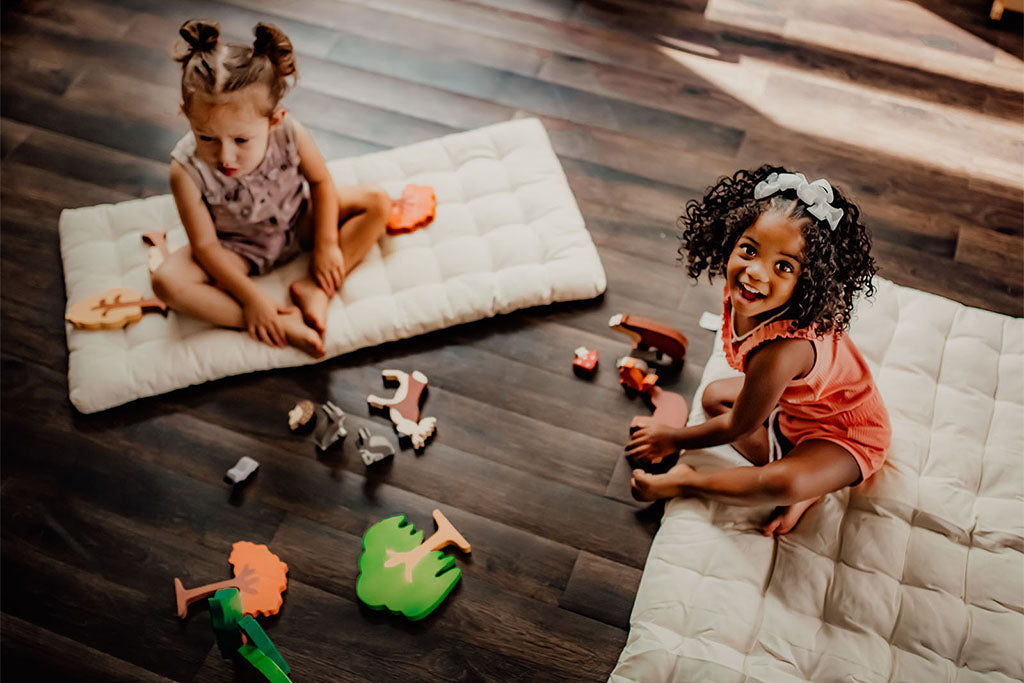Children are known for their pretend play, but did you know that it is also an essential part of their development? Imaginative play helps young children learn problem solving skills and prepares them for later academic learning.
Benefits of imaginative play
Imaginative play is so important! When children use their imagination in play, they use all the parts of their brains to plan and execute their ideas.
Pretend play allows children to:
- Process real-life experiences that are new, challenging, or even scary.
- Develop social skills and emotional intelligence.
- Put new skills they are learning to work.
- Hone their decision making and problem solving skills.
At what age do toddlers start imaginative play?
Toddlers begin to pretend between ages 2 and 3. Before that, you may see a young toddler act out familiar activities (like eating a snack), but it is not quite imaginative play at that stage. Rather, young toddlers are simply re-enacting what they know.
Sometime between 2 and 3 years old, toddlers will begin to play in more imaginative ways by creating their own narratives. As they mature, they will begin to spend more time planning their play and will have very precise ideas about how they want their play to be.
How can I help my toddler with imaginative play?
Often, parents try to help their children with imaginative play by getting involved and directing the play. But kids actually do better when they are on their own! Of course, if your child is interested in playing with you and you are willing, you can certainly join in. But be sure to give them the lead. Kids need time and space to direct their own play.
Although imaginative play comes naturally to young children, parents can still help to facilitate it by providing the right environment and materials. Take a hint from the Waldorf approach and look for beautiful, open-ended toys.
A few favorites to get you started are:
- A climbing triangle gives children a wide variety of ways to use their bodies to play. They often naturally begin to use it in imaginative ways over time.
- You can boost the creativity of a climbing triangle with the addition of a tent that goes over the top. Children can use the inside as a house, a bear cave, a princess castle...let their imagination run wild!
- Simple wooden toys, like play animals, can provide some inspiration for children to begin creating an imaginative world.
- Play scarves are a favorite for open-ended play.
- Read, read, read. Kids with lots of exposure to a variety of books can be inspired by stories to create their own play stories.
You don’t need a lot of toys in order to create an environment that supports imaginative play. At Cassarokids, we have a range of beautiful, open-ended items that encourage children’s creativity. Take a look at our shop to find the best choice for your child.
